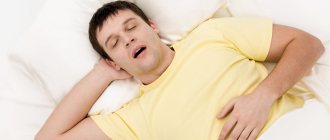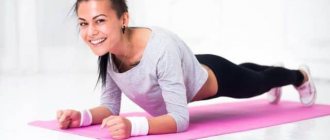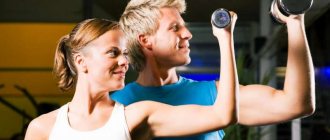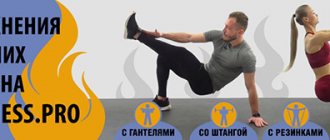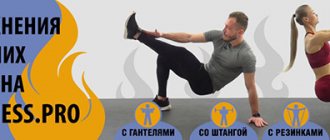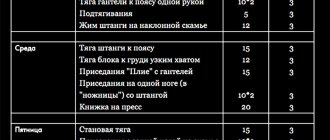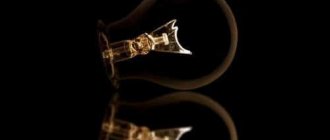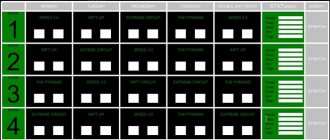Brain-muscle connection. How it works?
The relationship between the brain and muscles is responsible for the effectiveness of every exercise, every approach and repetition.
ulami.
The more effective the connection, the greater the efficiency of each exercise.
Let's imagine that your efficiency in squats is 40%. That is, the connection between the brain and muscles is not established.
This scenario has the following consequences:
- Significant reduction in efficiency . Neuromuscular connections in bodybuilding can determine your results. An athlete performs squats with a 100 kg barbell, but receives the effect of only 40 kg if the efficiency of his movements is 40%. Another athlete can squat 60kg and look much better than the first one. Because it gets the effect of all 60 kg, its efficiency is 100%;
- Changing technology . You will not feel the muscles being trained in full, as a result of which your technique will involuntarily change. Correct communication between the brain and muscles is the basis of technically correct training;
- The likelihood of injury increases . Due to improper technique and low sensitivity;
- You will feel the harm of bodybuilding , which we will discuss below.
If you have noticed athletes who lift heavy weights, do everything correctly (at first glance), but their muscles do not grow, then in such a situation, most often the culprit is a weak neuromuscular connection.
The same Jay Cutler, being a professional bodybuilder, trained with a 100 kg barbell in the bench press. His fellow members laughed at him. But he laughed at them at competitions, as he looked much more massive and more aesthetically pleasing.
Mechanism of contraction of striated muscles
Any skeletal muscle consists of muscle fibers, which, in turn, consist of many thin threads - myofibrils, located longitudinally. Each myofibril consists of protofibrils - filaments of contractile proteins : myosin (myosin protofibril), actin (actin protofibril).
In addition to contractile proteins, the myofibril contains two regulatory proteins : tropomyosin and troponin .
Myosin fibers are connected into a thick bundle, from which cross bridges extend towards the actin filaments. Each bridge has a neck and a head.
The actin filament is arranged in the form of 2 twisted strings of beads. It has actin centers.
Tropomyosin in the form of spirals entwines the surface of actin, closing its centers at rest. One tropomyosin molecule contacts 7 actin molecules.
Troponin forms a thickening at the end of each tropomyosin filament.
Under the influence of the PD that arises in the muscle fiber, Ca ions are released from the sarcoplasmic reticulum (SRR - Ca2+ depot). Calcium binds to troponin, which displaces the tropomyosin rod, resulting in the opening of actin centers.
As a result, the heads of myosin cross bridges are attached to the actin centers.
These posts make “rowing movements”, as a result of which the actin filaments are moved by these bridges relative to the myosin fibers, and muscle shortening .
The relaxation process occurs in reverse order using ATP energy due to the functioning of the calcium pump.
In the absence of a repeated pulse, Ca ions do not come from the SPR. As a result of the absence of the Ca-troponin complex, tropomyosin returns to its original place, blocking the actin centers of actin. Actin protofibrils easily slide in the opposite direction due to the elasticity of the muscle, and the muscle lengthens (relaxes).
Neuromuscular connection in bodybuilding
Wear and tear of the nervous system is the key harm of bodybuilding. It’s not customary to talk about this, but it is the central nervous system that is most often the most vulnerable point in iron sports.
There are several training factors that wear out the nervous system:
- Overtraining . Everything is clear here, it must be avoided;
- Poor neuromuscular connection . A weak impulse from the muscles to the brain and back itself loads the nervous system;
- Large weights . Due to poor communication, you have to take heavy weights. And this is a huge burden on the nervous system.
The formation of neuromuscular connections in bodybuilding is important not only for results, but also from the point of view of maintaining health.
Development of neuromuscular communication
The development of communication between the brain and muscles is based on:
- Preparatory stage . At this stage, we train with weights that are 1.5-3 times less than usual. Let's take the same squat of 100 kg. We reduce the weight to 50, perform the exercise smoothly, and monitor the technique. Learning the perfect technique. The preparatory period lasts from 2 to 4 months. But in general, the longer the better. And we are progressing very slowly. In fact, these 2-4 months you need to stagnate at a weight of 50 to 55 kg. And then gradually add more. 2.5 kg every 1-2 weeks, for example;
- Technique development . Additionally, we train the technique of basic exercises outside the gym. You can practice squats, imitate bench presses or pull-ups as morning exercises before bed. The neuromuscular connection in bodybuilding is formed only through frequent repetition of the same movements with the correct technique;
- Technically correct exercises . Under no circumstances should you break your equipment for the sake of faster progress.
We reduce the weight in all exercises and begin preparing for the future jerk. It is permissible to increase the frequency of visits to the gym. If you trained 2-3 times a week, now you can increase the number of workouts to 4-5 in 7 days.
Since the load will be reduced by 2 times, an increase in visits to our favorite rocking chair will only play into our hands. But you can’t completely forget about rest.
Well, now let's talk about personal things.
Section 2. Physiology of the neuromuscular system
Section 1. Physiology of the central nervous system and sensory systems, mechanisms of compensation for impaired functions
Introduction to physiology. General physiology of the central nervous system
1.
process;
A process is a sequential change of phenomena or states in the development of an action.
2.
adaptation;
Adaptation is a set of physiological reactions that underlie the process of the body’s adaptation to changes in environmental conditions and aimed at maintaining the relative constancy of its internal environment.
3.
Function;
function - specific activity of a system or organ.
4.
regulation;
regulation; Regulation is a mechanism that ensures the coordination of life processes.
5.
Exchange;
metabolism is a set of chemical transformations that ensure the vital functions of the body.
6. Functional system; A system is a collection of organs connected by a common function.
7. biorhythm; Biorhythm is a regular, periodic repetition in time of the nature and intensity of life processes.
8.
homeostasis;
Homeostasis is the constancy of the internal environment of the body.
9. irritability; Irritability is the ability of cells, under the influence of environmental factors, to move from a state of rest to a state of activity.
10.
excitability;
Excitability is the ability of highly organized tissues (nervous, muscular, glandular) to respond to stimulation by changing physiological properties
11.
reflex;
Reflex is the body’s response to irritation of receptors, carried out with the participation of the central nervous system
12.
synapse;
A synapse is a specialized contact zone between neuron processes and other excitable formations
13.
neuron;
Neuron is a structural and functional unit of nervous tissue and central nervous system structures.
14
Braking;
inhibition is an active process that occurs when a stimulus acts on tissue, manifested in the suppression of other excitation.
15. Excitable tissue of the human body
R nervous
16. Function of the efferent link of the reflex arc
R transmission of information from the nerve center
17. The law of bilateral conduction of excitation along the nerve fiber is
R in any direction
18. Slow conduction of excitation as a property of the nerve center is based on
R propagation of information in synapses
19. Plasticity as a property of the nerve center is based on
R ability of nerve centers to rearrange functional properties
20. The sequence of excitation through the synapse
1: depolarization of the presynaptic membrane
2: release of transmitter into the synaptic cleft
3: diffusion of the transmitter and interaction with receptors of the postsynaptic membrane
4: development of postsynaptic potential
21. Correspondence between the part of the reflex arc and its function
| receptor | provides the perception of a stimulus with the conversion of its energy into electrical |
| afferent link | ensures the transfer of information from the receptor to the structure of the central nervous system |
| central link | provides information processing |
| efferent link | ensures the transfer of information from the central nervous system to the effector |
| effector | provides feedback |
22. Correspondence between the principle of operation of the nervous network and its content
| divergence | the ability of a single neuron to establish connections with several nerve cells |
| convergence | convergence of several afferent and efferent excitations to one neuron |
| reverberation | circulation of excitation in a vicious circle, returning it to the “first” neuron of the nervous network |
23. The law of conduction of excitation along a nerve fiber without attenuation is
R maintaining the magnitude of the action potential
24. The principle of coordination of the activity of the central nervous system, which is characterized by the convergence of nerve impulses on one neuron, is called
R of the common final path
25. The principle of coordination of the activity of the central nervous system, which is characterized by the process of excitation of one center and inhibition of another, is called
R coupled braking
26. The principle of coordination of the activity of the central nervous system, which is characterized by the influence of higher located centers on lower ones, is called
R chain of command
27. The circulation of excitation in a vicious circle, its return to the “first” neuron of the nervous network, is called
R reverb
28. The spread of afferent information to a smaller number of neurons is called
R convergence
29. The ability of a single neuron to establish connections with several nerve cells is called
R divergence
30. Scientist who discovered the phenomenon of central inhibition
R I. M. Sechenov
31. Scientist who discovered the principle of the common final path
R Ch. Sherrington
32. Correspondence between a neuron and its function
| afferent | provide information transfer to the central nervous system |
| efferent | transmit information from the central nervous system to the effector |
| intercalary | promote interaction between neurons of the same structure of the central nervous system |
33.
Physiology;
physiology is the science of the functions and processes occurring in the body and the regulatory mechanisms that ensure human life in interaction with the environment.
34. Function of the afferent part of the reflex arc
R transmission of information to the nerve center
35. The law of saltatory conduction of excitation along a nerve fiber is
R propagation of excitation stepwise
Particular physiology of the central nervous system
36. Tendon reflex
R response to a very short stretch of a muscle (a blow to its tendon)
37. Autonomic reflexes
R reaction of internal organs to irritation of visceral receptors
38. Step reflex
R provides walking and running with the participation of two symmetrical limbs and is carried out on the basis of the crossed extensor reflex
39. The centers that control the work of the heart and breathing are located in
R medulla oblongata
40. The thalamus and hypothalamus are part of
R diencephalon
41. The structure of the central nervous system that integrates autonomic functions, regulates appetite and eating behavior
R hypothalamus
42. Structure of the central nervous system involved in organizing motivation and emotional behavior
R limbic system
43. Section of the cerebral cortex responsible for coordinating movements and speech
R frontal
44. The department of the brain, which, according to I. P. Pavlov’s definition, is the manager of body functions
R cerebral cortex
45. Basic functions of the cerebral cortex
R integrative, connection of the body with the external environment, coordination of movements
46. A system that unites the body into a single whole
R nervous
47. Loss of motor coordination due to damage to the cerebellum is called
R ataxia
48. Rapid muscle fatigue due to damage to the cerebellum is called
R asthenia
49. Loss of the ability for prolonged muscle contraction due to damage to the cerebellum is called
R astasia
50. Trembling of the fingers and head, increasing with movement, due to damage to the cerebellum is called
R tremor
51. Correspondence to the type of cerebellar dysfunction and its characteristics
| ataxia | impaired motor coordination |
| asthenia | rapid muscle fatigue |
| astasia | loss of ability for prolonged muscle contraction |
52. Correspondence between the type of cerebellar dysfunction and its characteristics
| dysmetria | movement disorder |
| dysarthria | speech motor disorder |
| tremor | trembling of fingers, hands, head at rest |
| impaired motor coordination |
53. With complete degeneration of the subcortical node, people cannot fence
R talk
54.Damage to the subcortical ganglion of the globus pallidus causes
R hypomimia
55. The structure of the central nervous system, damage to which leads to disruption of the process of memorization and information processing
R limbic system
56. Structure of the central nervous system involved in the regulation of the sleep-wake phase
R limbic system
57. The section of the cerebral cortex that performs the perception and analysis of auditory stimuli
R temporal lobe
58. Basic functions of the spinal cord
R reflex, vegetative, motor
59. When the associative zones of the cerebral cortex are destroyed,
R disorder of analytical and integrative functions
60. The part of the cerebral cortex that perceives skin irritations
R posterior central gyrus
61. The part of the cerebral cortex that perceives visual stimuli
R occipital lobe
62. The section of the cerebral cortex that performs the perception and analysis of auditory stimuli
R temporal lobe
63The "visceral brain" is called
R limbic system
64. The cardiovascular and respiratory centers are located in
R brain stem
65. Function of the red nucleus of the midbrain
R excites motor neurons of the spinal cord flexor muscles
precise movements of the fingers
66. Function of the substantia nigra of the midbrain
R regulates the acts of chewing, swallowing, ensures precise movements of the fingers
67. Reflexes carried out by the medulla oblongata
R protective (vomiting, sneezing, coughing)
68 Reflexes carried out by the spinal cord
R flexion
69. Reflexes carried out by the spinal cord
R rhythmic
70. The part of the brain that provides protective reflexes (lacrimation, blinking, coughing, vomiting)
R oblong
71. The part of the brain that provides rhythmic reflexes (scratching and stepping)
R dorsal
Physiology of sensory systems
72.
chemoreceptors;
Chemoreceptors are receptors that respond to various chemicals.
73. Rods and cones are . photoreceptors; photoreceptors .
74. The function of the retinal rods is the perception of light
75. The function of the retinal cones is perception. colors
76. Receptors that perceive irritation from the external environment -.. exteroceptors; exteroceptor .
77. Receptors that perceive irritation from the internal environment -. interoreceptors; interoreceptor
78. Reflexes that regulate muscle tone during movement
R statokinetic
79. Interoreceptors that perform the function of perceiving various changes in the internal environment of the body
R visceroceptors
80. Reflexes that regulate and ensure rhythmic eye movements in the direction opposite to the rotation of the body are called:
R vestibular
81.
myopia;
Myopia; Myopia; myopia is a vision disorder in which light rays are focused in front of the retina.
82.
Farsightedness;
farsightedness; Hypermetropia; hypermetropia is a visual impairment in which light rays are focused behind the retina.
83.
Colorblindness;
color blindness - impaired color perception or color blindness.
84. Correspondence of the concept and its definition
| line of sight | part of space visible when the eye is stationary |
| Visual acuity | the minimum angular distance visible to the eye between two objects (points) |
| Light sensitivity threshold | the lowest intensity of light that a person can see |
85. The sequence of passage of a light beam through the structures of the eye
1: cornea
2: anterior chamber moisture
3: pupil
4: lens
5: vitreous
6: retina
86. The function of equalizing pressure in the middle ear is performed by
R eustachian tube
87. Structure of the auditory sensory system that amplifies sound pressure
R middle ear ossicles
88. Correspondence of concepts and definitions
| Hypoosmia | decreased sense of smell |
| Hyperosmia | increased sense of smell, incorrect perception of odors |
| Hypergeusia | increased taste sensitivity |
| Parageusia | perversion of taste |
89. Correspondence of the reflex and its characteristics
| Static | maintaining body balance in a standing position and at different angles of inclination |
| Statokinetic | regulation of muscle tone during movement |
| Vestibular | a series of rhythmic eye movements in the direction opposite to the rotation of the body |
90. Correspondence between the structure of the auditory sensory system and its function
| Auricle | directional reception and concentration of sounds |
| External auditory canal | transmission of sounds to the eardrum and its protection |
| Middle ear bones | sound pressure gain |
91. Correspondence between the structure of the auditory sensory system and its function
| Eardrum | transmission of sound vibrations to the middle ear |
| Eustachian tubes | equalization of pressure in the middle ear and external auditory canal |
| Organ of Corti | the actual sound-receiving apparatus containing phonoreceptors |
Section 2. Physiology of the neuromuscular system
Neuromuscular system
92. Neurons that provide control of skeletal muscles - motor neurons; motor neuron
93. Reflexes that regulate muscle tone during movement - statokinetic
94.
movement;
movements; Movement; Movements - movement of the body or its parts
95.
force;
Strength is the ability of a muscle to develop maximum tension during contraction.
96.
motor;
A motor unit is a motor neuron with the muscle fibers it innervates
97.
Tetanus;
tetanus - a mode of muscle fiber contraction with short intervals between nerve impulses
98.
Tone;
tone - some muscle tension at rest.
99.
myofibrils;
Myofibrils; myofibrils; Myofibrils are the contractile elements of muscle fiber.
100.
Myosin;
Myosin; myosin; myosin - thick filaments of contractile protein in muscle fiber.
101.
Actinaceae;
actin; actin; Actin is a thin filament of contractile protein found in muscle fibers.
102. Transmission of an impulse from a motor neuron to a muscle fiber is carried out using the neuromuscular synapse; synapse
103. Resynthesis of ATP in muscle without the participation of oxygen occurs anaerobically .
104.
Involuntary;
involuntary movements are innate movements performed unconsciously.
105.
Arbitrary;
arbitrary _
movements are acquired purposeful movements carried out under the control of consciousness and will. 106. Modes of muscle fiber contraction are determined
R frequency of motor neuron impulses
107. With auxotonic muscle contraction
R changes muscle tension and length
108. Dynamic type of muscle contraction
R successive alternation of muscle contraction and relaxation
109. Muscle fiber is________
R cell
110. The main morphofunctional element of the neuromuscular apparatus is
R motor unit
111. ATP reduction in the oxidative energy system is carried out due to
R oxidative phosphorylation of carbohydrates
112. The source of energy for muscle contraction is
R ATP
113. Myosin and actin protein filaments in muscle cells are located
R strictly ordered
114. Structures that make up a motor unit
R motor neuron, motor neuron axon, muscle cells
115. Consciously controlled goal-directed actions
R voluntary movements
116. A posture characterized by the least muscle activity to support body parts
R lying
117. Voluntary movements
R are acquired throughout life and are formed on the basis of involuntary movements
118. Involuntary movements
R are unconditioned reflexes and are genetically determined
119. The somatic component of a motor skill is accompanied by
R by the formation of temporary connections in motor centers
120. The sequence of inclusion of motor units in work as its intensity increases
1: fast, fatigue resistant
2: slow
3: fast, easily tired
121. The sequence of inclusion of elements of the neuromuscular synapse
1: myelin sheath of axon
2: vesicles containing acetylcholine
3: presynaptic membrane
4: synaptic cleft
5: postsynaptic membrane
122. Sequence of stages of a functional system (according to P.K. Anokhin)
1: Afferent synthesis
2: Decision stage
3: Action acceptor formation
4: Efferent synthesis
5: Reverse afferentation stage
123. Correspondence of concepts and their definitions
| pose | fixed position of the human body or its individual parts in space |
| locomotion | human movements that provide active movement in space |
124. Correspondence of attitudinal reflexes and their characteristics
| nystagmus | movement of the eyeballs, ensuring the preservation of an image of the external world on the retina |
| free fall pose | statokinetic reflex, which ensures that the natural posture is maintained with the head up |
125. Correspondence of attitudinal reflexes and their characteristics
| position reflexes | changes in muscle tone when the position of the head in space changes |
| righting reflexes | redistribution of muscle tone with restoration of natural posture |
| elevator reflex | redistribution of muscle tone during vertical movement of the body |
126. Correspondence of concepts and their characteristics
| working posture | body position when working |
| standing pose | vertical position of the body with the crown up |
| sitting posture | additional support on the ischial tuberosities |
127. Correspondence between types of muscle contraction and their characteristics
| Isometric | change in muscle length with constant tension |
| Isotonic | change in muscle tension at a constant length |
128. Correspondence between types of muscle contraction and their characteristics
| Isokinetic | the muscle contracts, providing movement in the joint at a constant speed |
| Auxotonic | muscle tension and length changes |
129. Correspondence to the stage of the functional system P.K. Anokhin's characterization
| Afferent synthesis | processing and synthesis of all information necessary for the implementation of a motor act |
| Decision stage | formation of a specific final goal |
| Formation of an action result acceptor | predicting signs of a future outcome |
| Efferent synthesis | formation of central mechanisms that ensure obtaining a certain result |
| Reverse afferentation stage | evaluation of the obtained result with the programmed |
130. Correspondence between the concept and its definition
| Single cut | mechanical response of a muscle fiber or individual muscle to a single stimulus |
| Auxotonic contractions | a mode in which the muscle develops tension and shortens |
| Motor unit (MU) | motor neuron with the muscle fibers it innervates |
131. Rare heart rate (heart rate less than 60 beats/min) at rest is called
R bradycardia
132. Heart rates greater than 85 beats/min under conditions of relative rest are called
R tachycardia
133. The absence of tendon reflexes occurs when the spinal cord is damaged; spinal cord
134. Complete absence of voluntary movements
R paralysis
135. When the spinal cord is damaged, it occurs
R muscle hypertonicity
R decreased tendon reflexes
136. Correspondence between the term and its definition
| Physical inactivity | restriction of physical activity |
| Paralysis | complete absence of voluntary movements |
| Paresis | partial absence of voluntary movements |
137. The vagus nerve influences the functioning of the heart, causing
R decrease in heart rate
138. The sympathetic nerve influences the functioning of the heart, causing
R increased excitability of the heart
139. Hormone that increases heart rate
R adrenaline
140. An increase in minute volume of blood flow during muscle work in trained people occurs due to
R increase in systolic volume
141. An increase in minute volume of blood flow during muscle work in untrained people occurs due to
R increased heart rate
142. Sequence of periods and phases of ventricular systole
1: asynchronous reduction
2: isometric tension
3: rapid expulsion phase
4: slow expulsion phase
143. Sequence of periods and phases of ventricular diastole
1: protodiastole
2: isometric relaxation
3: rapid filling phase
4: slow filling phase
144. Correspondence between the concept and its definition
| Minute blood volume | amount of blood ejected by the ventricles of the heart per minute |
| Systolic blood volume | the amount of blood entering the arteries with each ventricular contraction |
| Heart rate | number of cardiac cycles per minute |
145. Correspondence between the concept and its definition
| tachycardia | increased heart rate |
| bradycardia | decreased resting heart rate |
146. Correspondence between the heart reflex and the body's reaction
| Goltz reflex | heart failure |
| Aschner reflex | slows heart rate and lowers blood pressure |
147. Correspondence between the cardiac reflex and the method of irritating receptors
| Goltz reflex | blow to the epigastric region |
| Aschner reflex | pressure on the eyeballs |
148. Correspondence to the period of the cardiac cycle and its duration
The brain-muscle connection in bodybuilding. Personal experience
The author of this material was able to personally experience how important the neuromuscular connection is in bodybuilding. When I first got into the gym, my first training session coincided with the beginning of the training journey of one guy, who later performed well at club competitions.
We started with the same results. Both of them bench pressed 30 kg on a horizontal bench and were terribly unhappy with it.
After 2 months, I had already achieved a result of 50 kg, and also improved my performance in other exercises. He was stuck at the level of 30-35 kg, and did not progress in other exercises.
This guy was complaining to me about his slow progress...
It is important to mention one nuance: he worked with a coach, and I selected the load on my own.
Then I was glad that I decided to do without coaching help, but a year later my opinion changed to the diametrically opposite.
A year later, he was bench-pressing 100 kg and confidently moving forward in every workout. I reached a plateau and was stuck at 80 kg.
He looked, taking into account the basically small difference of 20 kg of bench press, much better.
The thing is that the coach helped him form the correct brain-muscle connection, but for me its necessity and, in general, existence were not obvious.
In the end, I had to disassemble the barbell, drop to 40 kg, and do it all over again. While my friend was preparing for competitions and breaking new personal records.
This is how important neuromuscular communication is in bodybuilding.
Have you worked on building the brain-muscle connection? Are you planning to do this? Share your opinion in the comments!
